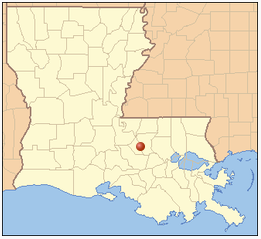| Home | Search | Emissions | Pollutants | About the Database |

Placid Refining (2366), Port Allen
LDEQ Accident Report
| Accident # | 136143 |
| State Police # | 11-07997 |
| Accident Date | 2011-12-23 |
| Report Date | 2011-12-28 |
| Follow-up Date | 2012-02-23 |
| Follow-up: | Yes |
Pollutants Released
| Pollutant | Duration | Point Source | Greenhouse Gas | Criteria Pollutant | Ozone forming chemical | Amount of Release |
| Sulfur Dioxide | 38h | incinerator 2 at sulfur plant #3 | NO | YES | NO | 4,168.0 pounds |
| Carbon Dioxide | 38h | incinerator 2 at sulfur plant #3 | YES | NO | NO | BRQ |
| Nitrogen | 38h | incinerator 2 at sulfur plant #3 | NO | NO | NO | BRQ |
| Hydrogen | 38h | incinerator 2 at sulfur plant #3 | NO | NO | NO | BRQ |
| Hydrogen Sulfide | 38h | incinerator 2 at sulfur plant #3 | NO | NO | NO | BRQ |
| Vapor | 38h | incinerator 2 at sulfur plant #3 | NO | NO | NO | BRQ |
| Carbon Monoxide | 38h | incinerator 2 at sulfur plant #3 | NO | YES | NO | BRQ |
| Carbon Disulfide | 38h | incinerator 2 at sulfur plant #3 | NO | NO | NO | BRQ |
| Carbonyl Sulfide | 38h | incinerator 2 at sulfur plant #3 | NO | NO | YES | BRQ |
Accident Classified As: No Information Given
Cause of Problem: Equipment Design
The #2 SRU tripped causing the air shutdown valve to close, forcing operations to shift the feed from the #2 SRU to the #3 SRU. The catalyst in the #2 TGTU became overloaded from the excess feed and breakthrough occurred causing sulfur to carryover to the #2 TGTU Quench Tower. The #2 TGTU Quench Tower became plugged with Sulfur and could not run at full capacity. The #2 TGTU had to be bypassed in order to clean the #2 TGTU Quench Tower. Reached RQ at 18:45 on the 23rd due to bypassing the #2 Tailgas unit. Normal was not reached until the 25th. The facility goes on to report that the shutdown was caused by a malfunction of a safety shutdown inherent to the technology of the design of the unit.
Discharge Preventable - No
The root cause was determined to be a a sudden and infrequent event that could not be prevented through good engineering practices.
Notes/Remedial Actions
In an effort to reduce the quantity of sulfur dioxide emissions from this incident, the refinery reduced the charge rate to the FCCU, discontinued processing LCO through the Diesel Hydrotreater and put the Sour Water Gas to the #2 SRU. These steps allowed them to keep the #3 SRU at minimum feed rates while the Quench tower in the #2 TGTU (which served the #3 SRU) was being cleaned. The shutdowns on the #2 SRU were tested and found to be in good working order. If it is shutdowns again, their alternative will be to divert the feed to the #3 SRU or flare Acid Gas. Placid does not feel that design, operational, or maintenance changes are required because shutdowns are tested during every turnaround. They classify this incident as unusual and rare, therefore, it is not expected to have a significant probability of occurring again. The sulfur dioxide emission rate was greater than 20.0 pounds per hour continuously for three consecutive hours or more. Placid Refinery then pushed more pollution out of SRU #3. Sulfur component releases from SRU #3 production from the start of the incident on 12/23/11 to 12/25/11 were approximately 1,380 lbs.

Connect With Us: